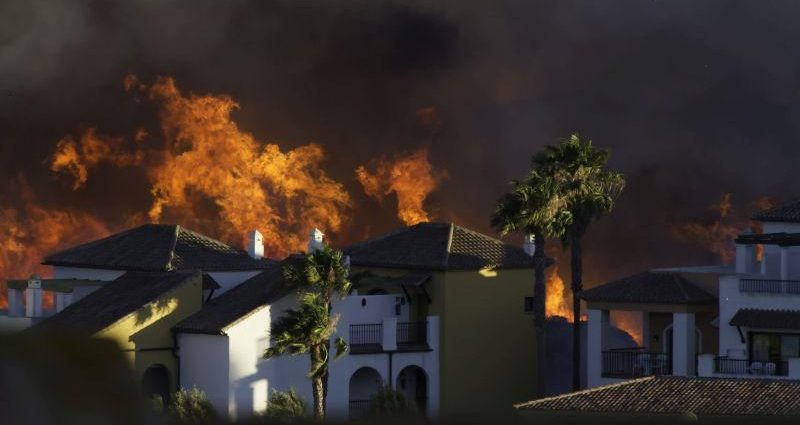WEDNESDAY, FEB. 23, 2022 (HealthDay News) — Devastating wildfires around the world will only grow in number in coming decades as climate change further fuels the chances of out-of-control blazes, a landmark report from the United Nations warns.
“The heating of the planet is turning landscapes into tinderboxes,” said the report, which was published on Wednesday by the United Nations Environment Program.
The report was prompted by a string of deadly blazes around the globe in recent years, burning the American West, vast stretches of Australia and even the Arctic.
Produced by more than 50 researchers from six continents, the report estimated that the risk worldwide of uncontrollable wildfires could increase by up to 57 percent by the end of the century, although some regions are likely to see more fire activity, while others may experience less. But all governments should prepare for the worst, the scientists added.
“There isn’t the right attention to fire from governments,” Glynis Humphrey, a fire expert at the University of Cape Town in South Africa and an author of the report, told The New York Times. While more countries are turning to prescribed burns and other methods of preventing wildfires from raging out of control, spending in developed nations is still heavily skewed toward firefighting instead of forest management, she noted.
In some regions with long histories of brush fires, such as eastern Australia and the western United States and Canada, they have become more intense over the last decade and are incinerating larger areas, the report found. But uncontrolled blazes are also starting to occur in places where it had not been common, such as Russia, northern India and Tibet. Meanwhile, in parts of of sub-Saharan Africa, fire activity has declined over the past two decades, partly because drought has killed off more vegetation, the report found.
Researchers concluded that the extreme heat wave in the Pacific Northwest last year almost certainly would not have occurred without planetary warming caused by greenhouse gas emissions. And scientists have also found the signs of climate change on brush fires in Australia and extreme heat and burning in Siberia. But hot weather and weak rainfall can also decrease the amount of vegetation that can feed fires. In other places, the decreased humidity can make vegetation more flammable, helping fires spread more easily.
In a moderate scenario, the likelihood of catastrophic fires could increase by up to a third by 2050 and up to 52 percent by 2100, the report estimates. If greenhouse gas emissions are not curbed and the planet heats up even more, wildfire risks could rise by up to 57 percent by the end of the century.
The increase in burning is projected to be especially pronounced in places including the Arctic, Douglas Kelley, a researcher at the U.K. Center for Ecology & Hydrology who conducted the data analysis for the report, told the Times. The northern reaches of Russia and North America are already warming far more rapidly than the rest of the world.
In more temperate regions of the United States and Asia, Kelley said, wildfires could increase as emissions rise because the higher amount of carbon dioxide in the air helps plants grow, resulting in more vegetation to fuel blazes. The prolonged drought in the American West — the region’s worst, scientists say, in at least 1,200 years — helped spark wildfires last year.
The report urges governments to become more proactive about fire hazards. For every dollar spent in the United States on managing wildfires, almost 60 cents goes toward firefighting responses, according to the report. Much less is spent on lowering fire risks ahead of disasters and helping communities recover in ways that could make them more resilient to future blazes.
Humphrey said more governments needed to realize what fire actually is: “something really critical for our planet, but that also needs to be managed.”
More information
Visit the Environmental Protection Agency for more on wildfires.
Copyright © 2025 HealthDay. All rights reserved.

